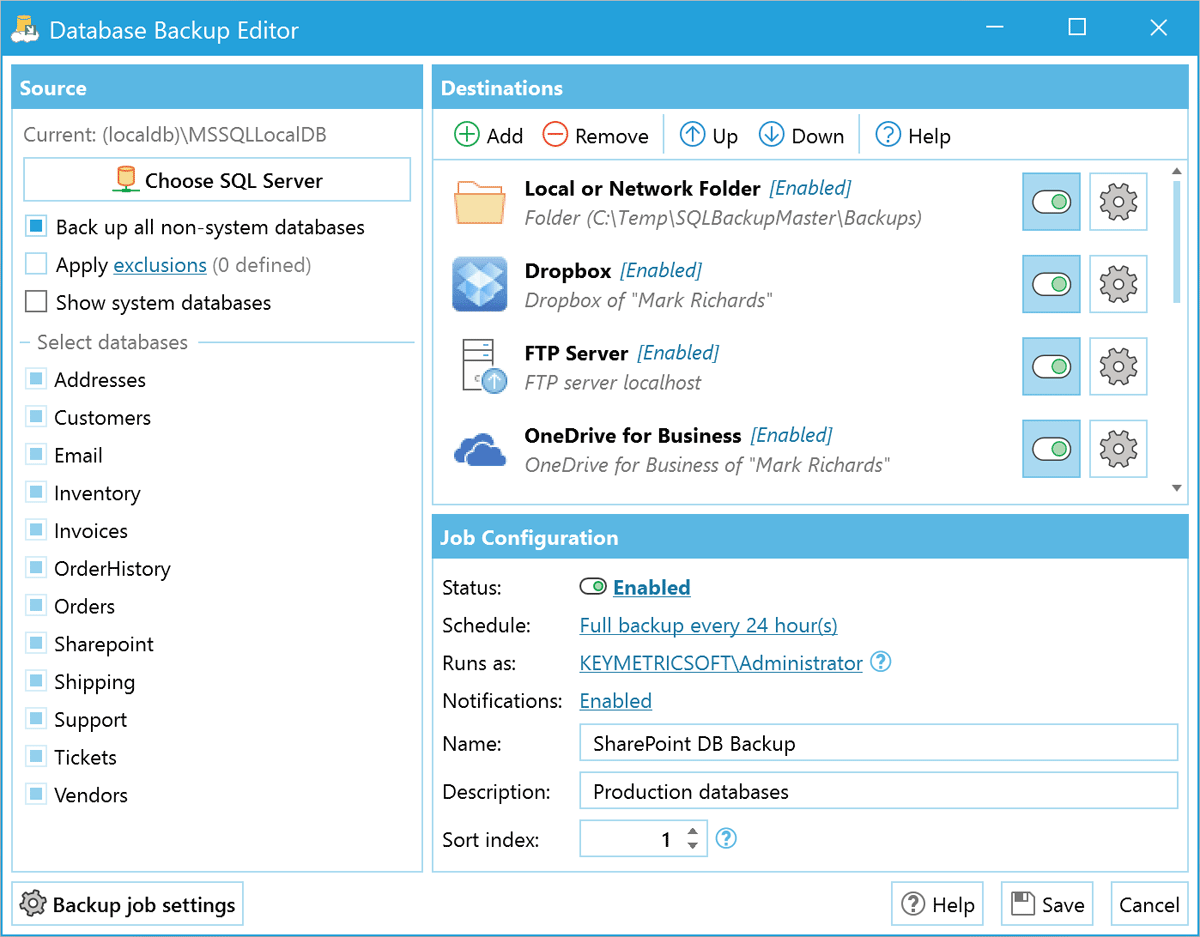
This feature has been enhanced in SQL Server 2016 (13.x) to provide increased performance and functionality through the use of block blobs, Shared Access Signatures, and striping. For more information, see SQL Server Backup to URL. This feature is also referred to as SQL Server Backup to URL. You can use this feature to manually back up or configure your own backup strategy like you would for a local storage or other off-site options. Manage your backups to Microsoft Azure: Using the same methods used to back up databases to DISK and TAPE, you can now back up to Microsoft Azure storage by specifying URL as the backup destination. SQL Server supports storing backups to Azure Blob Storage in the following ways: It also provides a summary of the benefits of using Azure Blob Storage to store SQL Server backups. This article introduces SQL Server backups to and restoring from Microsoft Azure Blob Storage. You should not use SQLBackupAndFTP if you want to monitor SQL Server performance and schedule backups online in your browser for a large number of servers - may be suited better for you.Applies to: SQL Server Azure SQL Managed Instance While for the majority of the users this is a huge advantage, some specific configurations are not handled. It is especially useful for any SQL Server versions, including Azure SQL and Amazon RDS SQL, MySQL, and MariaDB or PostgreSQL, since they don't have built-in in tools for backup.

SQLBackupAndFTP is ideal for any SQL Server, MySQL, PostgreSQL, Azure SQL, or Amazon RDS SQL database where backups should be sent to FTP, SFTP, FTPS, NAS, local or network folder, Google Drive, Dropbox, OneDrive, Box, Amazon S3 (and any S3-Compatible storage), Azure Storage, Backblaze B2, Yandex.Disk.

SQLBackupAndFTP is a software that backups SQL Server, MySQL, and PostgreSQL Server databases, performs regular full, differential, and transaction log backups, runs file/folder backup, zips and encrypts the backups, stores them on a network or on an FTP server or in the cloud (Amazon S3 and others - we're constantly adding more), removes old backups, and sends an e-mail confirmation on the job's success or failure.


 0 kommentar(er)
0 kommentar(er)
